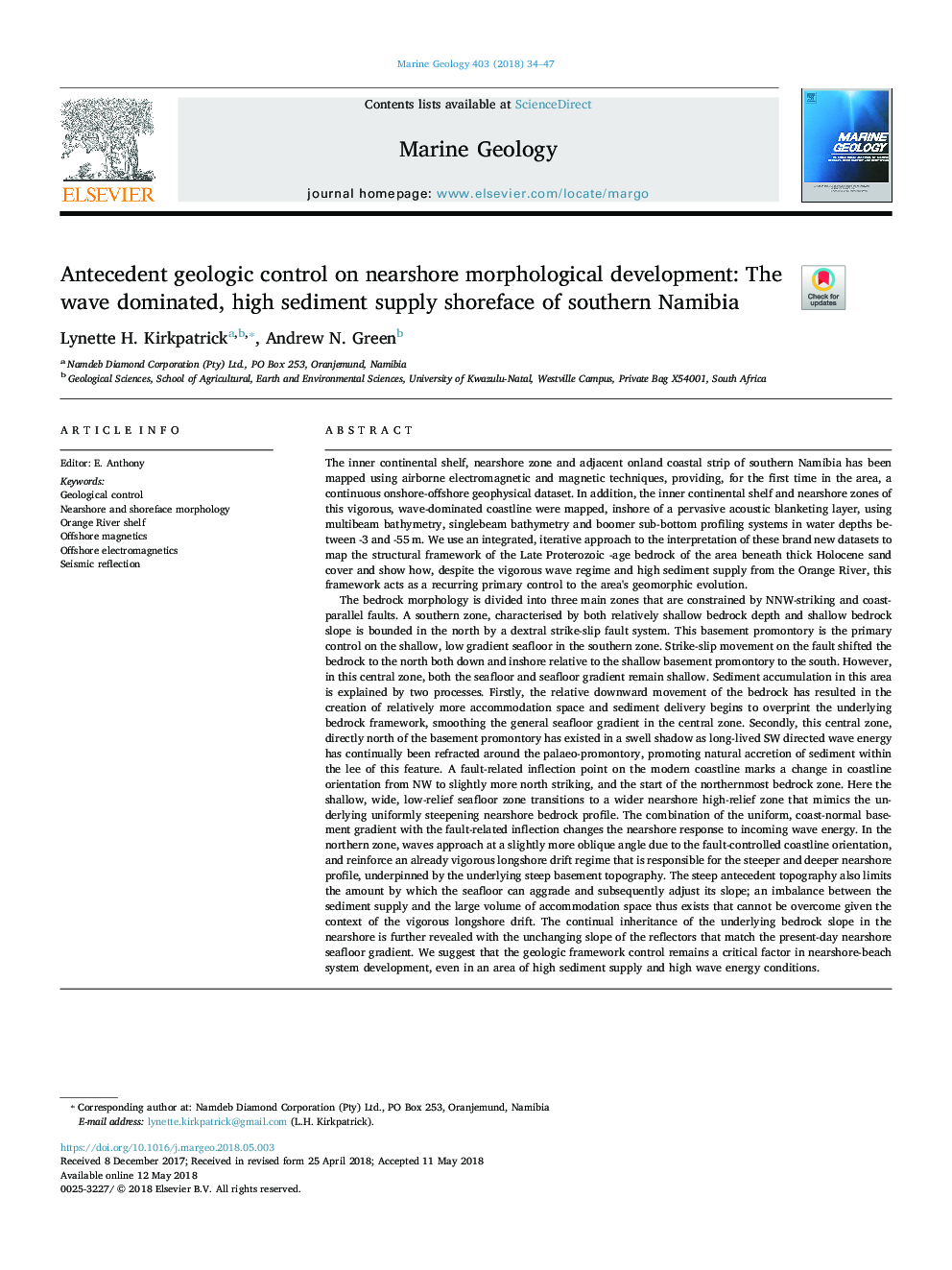| کد مقاله | کد نشریه | سال انتشار | مقاله انگلیسی | نسخه تمام متن |
|---|---|---|---|---|
| 8911917 | 1639049 | 2018 | 14 صفحه PDF | دانلود رایگان |
عنوان انگلیسی مقاله ISI
Antecedent geologic control on nearshore morphological development: The wave dominated, high sediment supply shoreface of southern Namibia
ترجمه فارسی عنوان
کنترل زیستشناسی پیشین بر توسعه مورفولوژیکی ناهارخوری: موجی که تحت تأثیر قرار می گیرد، رسوبات زیاد را در جنوب غربی نامیبیا تامین می کند
دانلود مقاله + سفارش ترجمه
دانلود مقاله ISI انگلیسی
رایگان برای ایرانیان
کلمات کلیدی
کنترل زمین شناسی، مورفولوژی نزدیک به سرخ و ساحلی قفسه رودخانه نارنجی، مغناطیس دریایی، الکترومغناطیس ساحلی انعکاس لرزه ای،
موضوعات مرتبط
مهندسی و علوم پایه
علوم زمین و سیارات
ژئوشیمی و پترولوژی
چکیده انگلیسی
The bedrock morphology is divided into three main zones that are constrained by NNW-striking and coast-parallel faults. A southern zone, characterised by both relatively shallow bedrock depth and shallow bedrock slope is bounded in the north by a dextral strike-slip fault system. This basement promontory is the primary control on the shallow, low gradient seafloor in the southern zone. Strike-slip movement on the fault shifted the bedrock to the north both down and inshore relative to the shallow basement promontory to the south. However, in this central zone, both the seafloor and seafloor gradient remain shallow. Sediment accumulation in this area is explained by two processes. Firstly, the relative downward movement of the bedrock has resulted in the creation of relatively more accommodation space and sediment delivery begins to overprint the underlying bedrock framework, smoothing the general seafloor gradient in the central zone. Secondly, this central zone, directly north of the basement promontory has existed in a swell shadow as long-lived SW directed wave energy has continually been refracted around the palaeo-promontory, promoting natural accretion of sediment within the lee of this feature. A fault-related inflection point on the modern coastline marks a change in coastline orientation from NW to slightly more north striking, and the start of the northernmost bedrock zone. Here the shallow, wide, low-relief seafloor zone transitions to a wider nearshore high-relief zone that mimics the underlying uniformly steepening nearshore bedrock profile. The combination of the uniform, coast-normal basement gradient with the fault-related inflection changes the nearshore response to incoming wave energy. In the northern zone, waves approach at a slightly more oblique angle due to the fault-controlled coastline orientation, and reinforce an already vigorous longshore drift regime that is responsible for the steeper and deeper nearshore profile, underpinned by the underlying steep basement topography. The steep antecedent topography also limits the amount by which the seafloor can aggrade and subsequently adjust its slope; an imbalance between the sediment supply and the large volume of accommodation space thus exists that cannot be overcome given the context of the vigorous longshore drift. The continual inheritance of the underlying bedrock slope in the nearshore is further revealed with the unchanging slope of the reflectors that match the present-day nearshore seafloor gradient. We suggest that the geologic framework control remains a critical factor in nearshore-beach system development, even in an area of high sediment supply and high wave energy conditions.
ناشر
Database: Elsevier - ScienceDirect (ساینس دایرکت)
Journal: Marine Geology - Volume 403, 1 September 2018, Pages 34-47
Journal: Marine Geology - Volume 403, 1 September 2018, Pages 34-47
نویسندگان
Lynette H. Kirkpatrick, Andrew N. Green,
